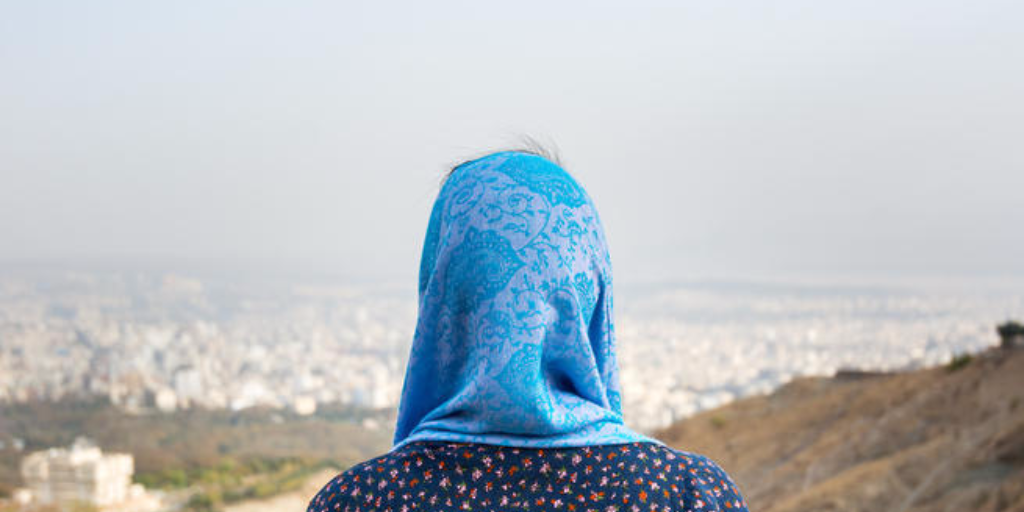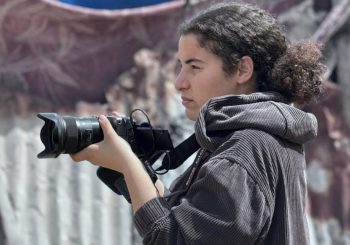In a society with a high sense of religious sentiment, it is a little hard for any criticism or negative depiction of a religious tradition to go unnoticed.
In 2013, the number of veiled women in media started to increase, after they were almost absent prior to the revolution. The headscarves showed up in the media unreservedly everywhere: talk shows, TV series, and advertisements.
In spite of the newly-obtained right that used to be vastly scarce, the depiction of the hijab in TV dramas and movies has been viewed to carry negative connotations by several veiled girls and women.
In the past few weeks, a new TV series called Sabee Gar (“The Seventh Neighbor”) kicked off and managed to draw the attention of many people. All in all, the success of the series was attributed to how relatable it is to the daily lives of Egyptians.
However, it didn’t escape criticism after several people accused the show of depicting veiled characters as women who are religiously extreme and/or easily fooled. Another example from the series was a woman who is rather conservative, creating a dismal mood that repels her husband.
This uncanny depiction is not exclusive to Sabee Gar. In the holy month of Ramadan, another TV series le Aa’la Se’r (“To the Highest Price”) also stirred criticism. It featured the successful life of a female ballet dancer. As the events of the series progressed, this dancer decided to turn down her career and wear the niqab.
Simultaneously, her husband cheated on her and her life began to fall apart. While the plot demonstrated the incentives of the characters in each decision, the outrage stirred after the ballet dancer decided to take off her niqab. That’s when the events started turning in her favour and she started to gain ground.
Multiple other dramas sparked debates on the depiction of veiled women in media, particularly given a large portion of Egyptian women is veiled. Naturally, and if media productions truly feature real-life events, the hijab should undoubtedly be on screen.
Although the negative depiction of the hijab in media cannot be generalized, some examples have irritated the audience. It remains unfathomable why women who wear the hijab are often viewed as illiterate, conservative, or even extreme when in real life, it is habitual and about 90 percent of Egyptian women wear it, according to the Economist.
Some producers in the media field still fail to comprehend that the hijab is not exclusive to religion Egypt: it also has societal and even political aspects that cannot be ignored.
The hijab with its known current shape wasn’t always a fundamental part of the Egyptian society.
The Egyptian TV Drama Bent Esmaha Zat (“A girl called Zat”) opted for a more comprehensive view on the hijab. The story tackled the life a girl whose name is “Zat” and reflected on the different phases of her life.
By the beginning of the 1990s, social pressures compelled Zat to wear the headscarf. The TV series shed light on the political and social changes since 1952 through the story of the ordinary Egyptian girl and progressed to reach the revolution of 2011.
The context of the character’s progression was in line with the social and political events in Egypt at the time. More importantly, the timing of her wearing the hijab was perfectly placed in the series.
How did “Zat” precisely reflect the social, political, and cultural scenes in Egypt?
It was rather unusual for women in Egypt in the 1950s and 1960s to cover up their hair. However, from the 1970s and thereafter, the hijab, in its current form became more common than ever and it started to be a religious norm in Egypt.
In reference to what happened to Zat, the 1990s witnessed an unusual increase in the number of hijabi women. The TV series featured the substantial cultural transformations that happened within Egypt.
Realistically, some would argue that this cultural and social rotation occurred due to an unusual take over by some religious groups, including the Muslim Brotherhood which was technically banned at the time. Also, the increase in the number of Egyptian Diasporas in the Gulf countries that led to a noteworthy increase in the total of veiled women was also considered.
Conversely, others would argue that Egyptians have grown more religious and more conforming to the orthodox teachings of the Islam. The Egyptian people are often labeled as “people who are religious by nature”.
During the era of former president Hosni Mubarak, specifically as of 2002, a notable crackdown on veiled girls started to surface from the government. They were not allowed to appear on media visual platforms, act, or have any significant presence in the media field.
On the other hand, and opposing to the policies of the elitist class and the ruling regime, the veil was forcing itself stronger than any other time on Egyptian streets. One of Egypt’s ministers back then, Farouk Hosny, came under fire after he had stated that the hijab is not a good step. He further added that hair is like a beautiful flower that shouldn’t be covered.
At the time, the hijab wasn’t viewed by the regime as a personal, or religious choice. However, it was a conflict with the Muslim Brotherhood who thought that they escorted more number of people on their side by promoting this religious tradition, the New York Times reported back then.
Additionally, the hijab became popular among young adolescent girls in 2007 and the few years that followed. It was a result of multiple so-called preachers who were targeting youth, including Amr Khaled and Mustafa Hosny. They were fundamentally targeting youth and started to promote the hijab and they fairly succeeded among the middle-class.
Egyptian Revolution, and breaking free from norms
After the 25 January 2011 revolution, youth in Egypt have gained a considerate amount of hope. More importantly, the revolution to them was a carte blanche to openly voice their genuine opinions on any topic regardless of how sensitive it might be. The Egyptian revolution triggered a sense of freedom of choice.
While several things have altered after the revolution, and despair has sometimes infiltrated this hope due to the socio-economic turmoil, one thing gripped its tight control over the social scene: rebellion.
Still, the vast majority of women and girls are veiled in Egypt, but it is currently notable that the rate of girls taking off their hijab is undeniably large in a clear sign of rebellion over the social norms they grew up to.
Having created substantial changes in the Egyptian society, the revolution also cultivated an integral adherence to the freedom of choice and breaking free from what is common and traditional.
The depiction of women in media, generally, also reflect the substantial changes that happened to women because of social status following the revolution.
What, however, remains undeciphered is how media industry views veiled women. The history of the hijab in Egypt underwent several social, religious, and even political discussions that the media chooses to turn a blind eye to. This reflects either a shallow integrity with the real Egyptian society or a consistent decision from decision makers to feature the veil as an unfavourable decision.





Comments (2)
[…] known to be largely religious, Hijabi women still face a lot of discrimination, particularly in the media, which often depicts them as ‘extreme’ or ‘foolish’, or in public places […]
[…] known to be largely religious, Hijabi women still face a lot of discrimination, particularly in the media, which often depicts them as ‘extreme’ or ‘foolish’, or in public places […]